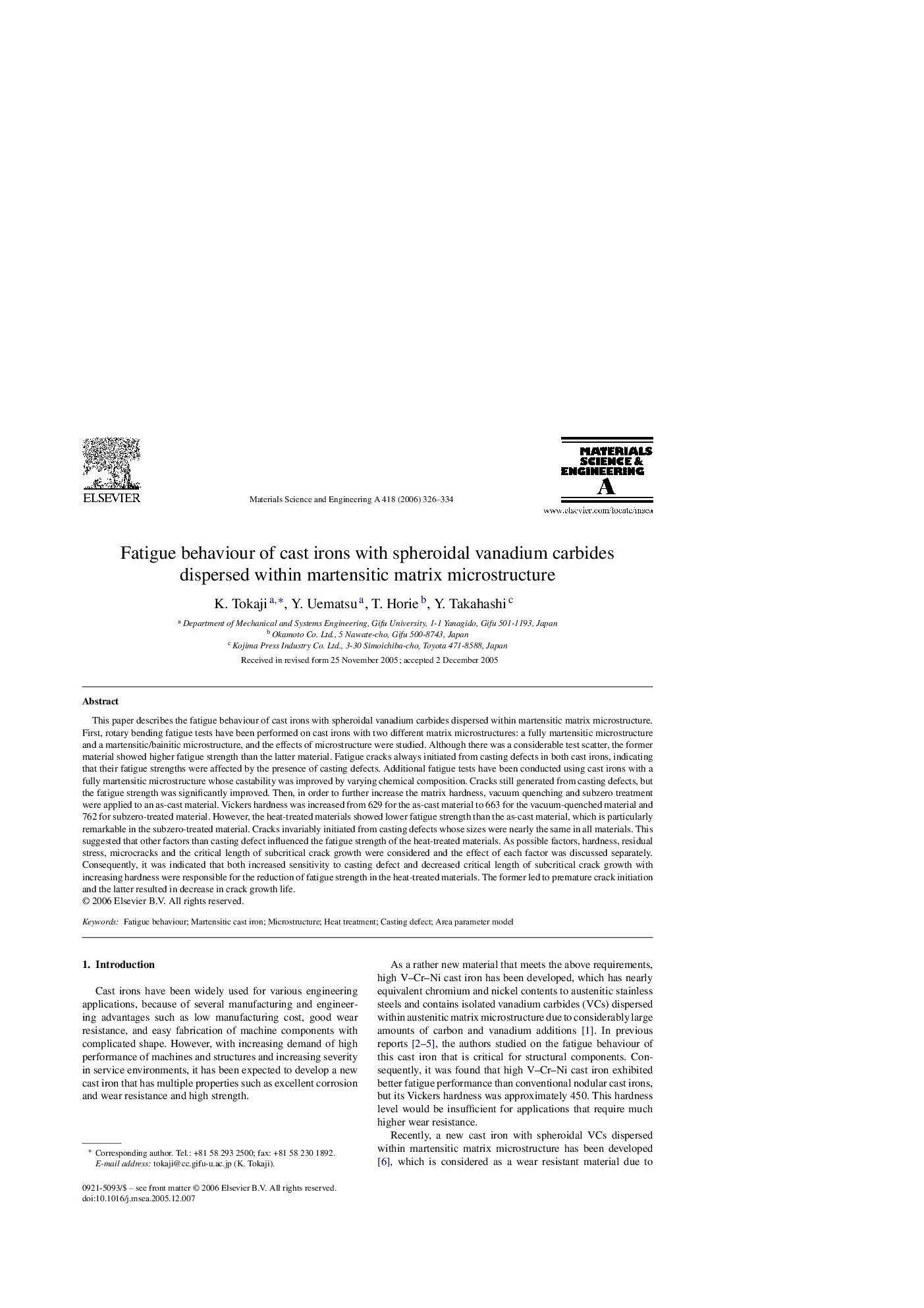| Article ID | Journal | Published Year | Pages | File Type |
|---|---|---|---|---|
| 1586047 | Materials Science and Engineering: A | 2006 | 9 Pages |
This paper describes the fatigue behaviour of cast irons with spheroidal vanadium carbides dispersed within martensitic matrix microstructure. First, rotary bending fatigue tests have been performed on cast irons with two different matrix microstructures: a fully martensitic microstructure and a martensitic/bainitic microstructure, and the effects of microstructure were studied. Although there was a considerable test scatter, the former material showed higher fatigue strength than the latter material. Fatigue cracks always initiated from casting defects in both cast irons, indicating that their fatigue strengths were affected by the presence of casting defects. Additional fatigue tests have been conducted using cast irons with a fully martensitic microstructure whose castability was improved by varying chemical composition. Cracks still generated from casting defects, but the fatigue strength was significantly improved. Then, in order to further increase the matrix hardness, vacuum quenching and subzero treatment were applied to an as-cast material. Vickers hardness was increased from 629 for the as-cast material to 663 for the vacuum-quenched material and 762 for subzero-treated material. However, the heat-treated materials showed lower fatigue strength than the as-cast material, which is particularly remarkable in the subzero-treated material. Cracks invariably initiated from casting defects whose sizes were nearly the same in all materials. This suggested that other factors than casting defect influenced the fatigue strength of the heat-treated materials. As possible factors, hardness, residual stress, microcracks and the critical length of subcritical crack growth were considered and the effect of each factor was discussed separately. Consequently, it was indicated that both increased sensitivity to casting defect and decreased critical length of subcritical crack growth with increasing hardness were responsible for the reduction of fatigue strength in the heat-treated materials. The former led to premature crack initiation and the latter resulted in decrease in crack growth life.
